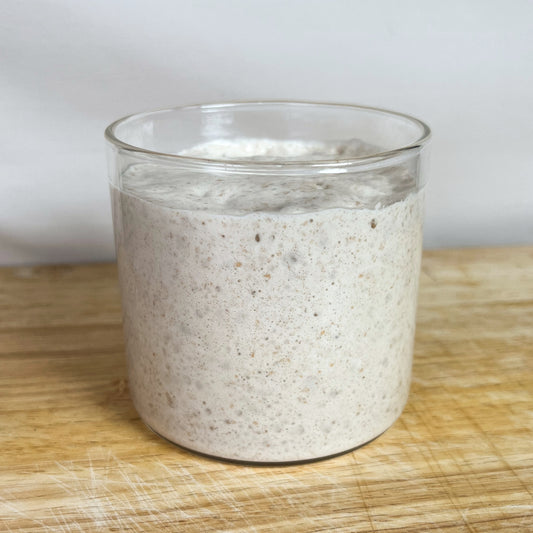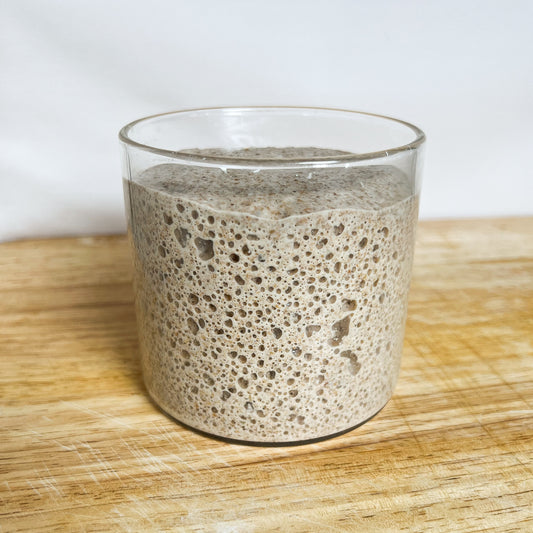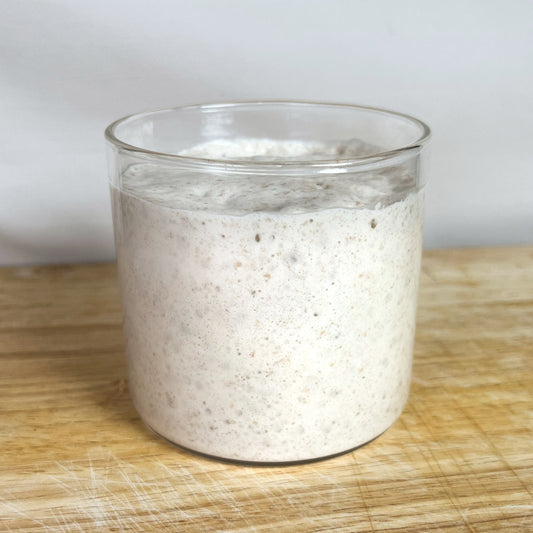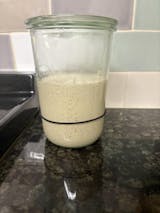Choosing the Right Bread Lame: A Buyer's Guide
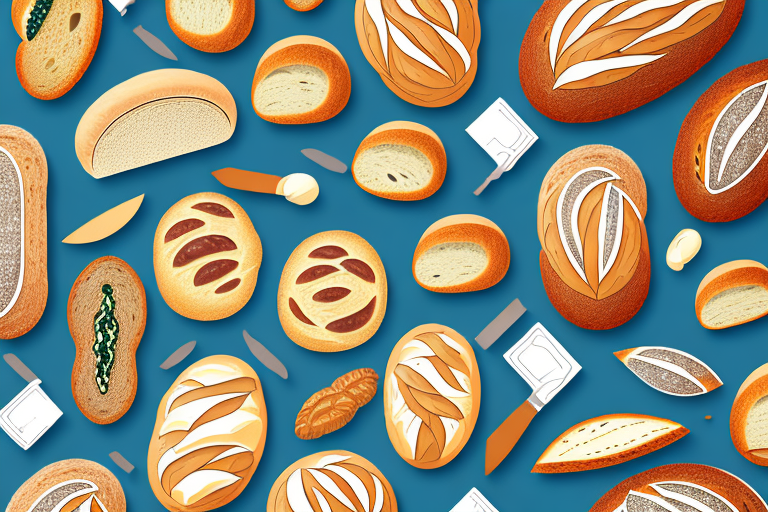
Bakers know that breads with beautifully scored crusts not only look great, but they also provide unique flavor and texture experiences. Scoring bread with a knife can be effective, but bread lames are more popular among baking experts. Even for home bakers, choosing the right bread lame can make a huge difference in the quality of bread loaves we can produce.
Understanding Bread Lames
Before diving into the features one should consider when purchasing a bread lame, let's first understand what it is and why we use it in baking.
Bread baking is a time-honored tradition that has been around for centuries. It is an art form that requires precision and attention to detail. One of the essential tools in a baker's arsenal is the bread lame. It is a simple yet effective tool that helps create beautiful and delicious bread that is sure to impress.
What is a Bread Lame?
A bread lame is a tool that bakers use to score bread dough before baking. It consists of a sharp blade and a handle. The blade is typically curved but can be straight and has a pointed edge, resembling a razor blade. "Lame" comes from the French word for "blade," which makes sense since this tool is known for its sharpness.
The blade is usually made of stainless steel, which is resistant to rust and corrosion. The handle can be made of various materials, such as wood or plastic, depending on the user's preference. Some bread lames even come with interchangeable blades, allowing bakers to switch between straight and curved blades depending on the design they want to create.
The Purpose of a Bread Lame in Baking
Scoring bread dough creates vents on the surface, allowing gas to escape during baking, leading to a more uniform rise and a desirable texture in the final product. Additionally, scoring the dough surface allows it to expand in a controlled manner, preventing it from bursting in random spots. Most importantly you must score large loafs of bread to ensure that they bake properly through out.
Using a bread lame also helps create beautiful patterns on the bread's surface, making it not only delicious but also visually appealing. Whether it's a simple straight line or an intricate design, a bread lame can help bakers achieve the perfect look for their bread.
Different Types of Bread Lames
There are various types of bread lames available in the market, and each type has its unique strengths and weaknesses. The main categories of bread lames are straight-lame, curved-lame, and scoring-combs.
Straight-lames tend to provide a sharper edge and better control. They are ideal for making straight lines or simple designs on the bread's surface. Curved-lames, on the other hand, are useful in creating curved patterns on dough surfaces. They are perfect for making swirls or waves on the bread's surface. Scoring-combs are ideal for achieving more intricate designs on bread crusts. They come with multiple blades that allow bakers to create unique and beautiful patterns on their bread.
When choosing a bread lame, it is essential to consider the type of bread you will be making and the designs you want to create. Each type of bread lame has its unique features that make it suitable for specific tasks. By choosing the right bread lame, you can take your bread baking to the next level and create beautiful and delicious bread that will impress everyone.
Key Features to Consider
The following features should be taken into consideration when purchasing a bread lame:
Blade Material and Sharpness
The blade of the bread lame is arguably the most crucial factor that can affect the quality of scoring. A good blade should be sharp enough to cut through the dough without dragging or tearing it. Some bread lames come with detachable blades, while others have integrated blades with no replacement option. Blades made of high-quality steel, stainless steel, or surgical-grade materials tend to be more durable and stay sharper for longer. A sharper blade will also minimise the deformation of the dough surface during scoring, resulting in a more beautiful and consistent pattern on the crust.
It's also important to note that some bread lames come with interchangeable blades of different shapes and sizes, allowing you to create a variety of scoring patterns and designs on your bread. This feature is especially useful if you like to experiment with different scoring techniques or if you want to create more intricate designs on your loaves.
Handle Design and Comfort
Handles are critical in ensuring good grip and control during scoring. Handles need to be comfortable, non-slip, and easy to grip with both hands. Some bread lames come with ergonomic handles that fit comfortably in the hand, even when used extensively. The weight balance of the lame can also affect the bread scoring experience; choosing a lame with a well-balanced weight distribution makes scoring easier.
Another important factor to consider is the length of the handle. A longer handle can provide better leverage and control, especially if you have larger hands or if you're working with a larger loaf. However, a shorter handle can be more manoeuvrable and easier to control, especially if you're new to bread scoring or if you're working with smaller loaves.
Blade Replacement and Storage Options
A bread lame with a detachable blade is a better choice than one with an integrated blade. These lames are less expensive, and the replacement blades are easier to find. Detachable blades also make cleaning and maintenance easier, as you can remove the blade and wash it separately from the handle.
As bread lames do not come in contact with food items directly, cleaning after use usually means wiping the blade and handle with a damp cloth. However, it's helpful to have a storage box or cover to keep the blade protected when not in use. This can help prevent the blade from getting damaged or dull over time, ensuring that your bread lame stays in good condition for longer.
Price and Durability
Higher-priced bread lames are not necessarily better than less expensive ones. Do your research and read customer reviews before making a purchasing decision. Bread lames that are moderately priced and made of high-quality materials tend to last longer, provide better scoring experience, and provide better value for money.
It's also worth considering the durability of the bread lame before making a purchase. A bread lame that is well-made and built to last can save you money in the long run, as you won't have to replace it as frequently. Look for bread lames that are made of sturdy materials and have a solid construction, as these are more likely to withstand regular use and provide consistent results over time.
How to Use a Bread Lame Effectively
Of course, choosing the right bread lame is only part of the equation. Knowing how to use it effectively is key to achieving the best possible bread loaves. Here are some tips for effective bread scoring:
Proper Scoring Techniques
First and foremost, it's important to hold the bread lame correctly. Hold the handle of the lame like a pencil and aim the blade at an angle of about 30 to 45 degrees to the dough surface. Make swift, confident cuts through the dough surface, creating lovely cuts in nice patterns. It's helpful to practice on parchment paper before scoring and baking the actual dough.
Tips for Clean and Precise Cuts
A bread lame is only as good as its blade sharpness. It's essential to ensure the blade is sharp before each use to prevent tearing and deformation of the bread dough. Scoring too shallow or too deep can also create problems and affect the bread's final shape and texture. Using a spray bottle to moisten the dough surface before scoring can help achieve a clean score line. It's also helpful to work with chilled dough when possible and have the proper work surface and equipment to achieve the perfect score.
Troubleshooting Common Issues
If your bread loaves come out unevenly scored, or if you experience tearing and deformation, there are ways to overcome these issues. One solution is to adjust the angle of the blade when scoring. Scoring too deeply can be fixed by scoring less deeply. Tearing and deformation can be prevented by using a sharper blade and working with well-timed, confident cuts.
Conclusion
Choosing the right bread lame is an essential part of baking perfect bread loaves. Understanding the features to consider and practicing proper scoring techniques are crucial for the best outcome when baking bread. Consider the brands and models mentioned in this guide to find the right bread lame for your baking needs.

